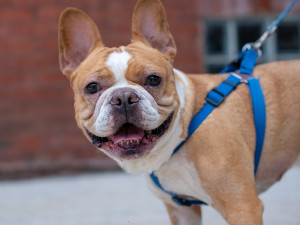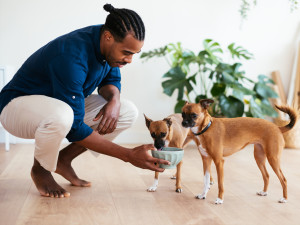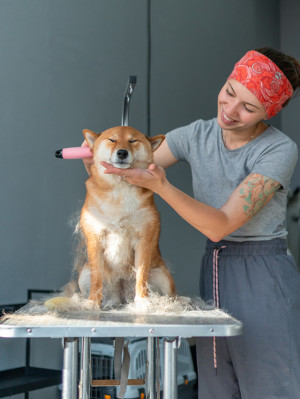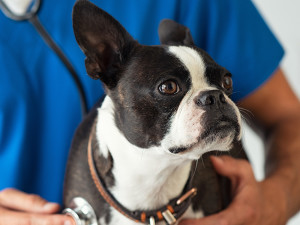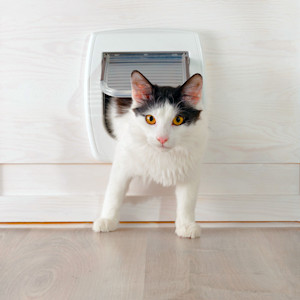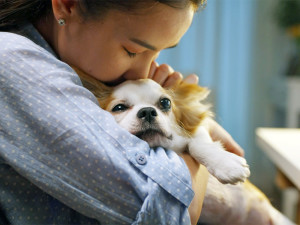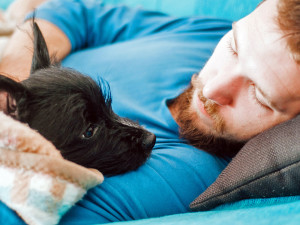8 Things You Needn’t Splurge On For Your Pet (If You Don’t Want To)
If you don’t buy these things for your beloved cat or dog, you’re not a bad pet parent
Navigating pet care expenses can be a daunting experience at the best of times, let alone during a cost-of-living crisis. However, there’s good news for budget-conscious pet parents: you don’t always need to break the bank to provide top-notch care for your four-legged family member.
Of course, if buying a certain food or spoiling them with a new toy is your bag then go for it! We’re not here to judge. But there are plenty of areas where you can save money without compromising on quality or your pet’s happiness. From toys to treats, we spoke to the experts on how you can save money while keeping your pet happy and healthy.
Get (totally free) deals for food, treats, accessories, tech and way more pet parenting must-haves.
Toys
Toys play a key role in keeping your pet entertained and mentally stimulated (plus they just look so cute!). However, you don’t have to break the bank to keep your pet entertained. “Your pet doesn’t mind if the toy has a cute face on it or not,” says Suzy Harniman, a senior lecturer in Veterinary Nursing at Hartpury University. “What matters is that it’s safe and suitable for their species.”
Seasoned dog trainer and behaviourist, Ria Edmenson, suggests practical alternatives to expensive store-bought toys. “A plastic bottle with the lid and label removed or a sturdy cardboard box can provide hours of entertainment for your pet,” she advises. “These items are inexpensive and readily available, making them a cost-effective option for budget-conscious pet parents.”
Ria emphasises the value of simplicity when it comes to dog toys in particular. “There’s no point spending lots of money on toys that will die a quick death,” she says. Ria suggests practical alternatives like plastic bottles (with lids and labels removed), cardboard boxes or sturdy wooden items, all of which are “great, but cheap dog toys”.
Fancy collars and leads
Collars and leads are essential for keeping your pet safe during walks and providing identification in case they get lost. While there’s a wide range of collars and leads on the market, at hundreds of different price points, you don’t need to splurge on the most expensive options to keep your pet secure.
Suzy stresses the importance of functionality over aesthetics when selecting collars and leads. “Your pet doesn’t mind what they look like,” she says. “The most important thing is that collars are fitted correctly so they are comfortable, but cannot slip off over the pet’s head.”
However, whilst you shouldn’t need to spend thousands on a well-made collar, Ria cautions against sacrificing safety for affordability, emphasising that “safety is always number one – a good quality collar, harness or lead that won’t snap, the buckles or clips won’t break”.
Coats
For pets that spend time outdoors in cold or wet weather, a coat can provide much-needed warmth and protection. While some pet coats come with hefty price tags, there are plenty of budget-friendly options available, too.
Suzy recommends focusing on functionality over fashion when selecting a coat for your pet. “The main requirement of a coat is to keep your pet warm and dry,” she says. “You don’t need to splurge on expensive brands or fancy designs. What matters is that the coat fits well and provides adequate coverage.”
Ria recommends Equafleeceopens in new tab or Hotterdog fleeces over coats for pups that get chilly: “They are brilliant, do the job, wear and wash really well – we’ve had ours for nearly 10 years!”
Accessories and outfits
Put the bow tie down. While it’s insanely tempting to dress your pet in the cutest fancy dress outfits, clothes and accessories are one area where you can easily save money. Suzy advises against splurging on expensive accessories that your pet may quickly outgrow or lose interest in.
“The number one thing you can save money on when it comes to your pets is accessories,” she says. “They will think they look great even if they don’t have bows in their hair.” (We can almost hear our cat’s eye-roll already.)
Beds
Of course you want your precious pet to be as comfortable as humanly (pet-ly?) possible when they’re adorably chasing squirrels in their dreams, but you don’t need to spend a fortune to provide them with a cosy place to sleep. “Don’t be swayed by expensive novelty beds,” says Suzy. “They may look nice, but do not always optimise your pet’s comfort.”
A top tip for pet bed shopping is to get the bed off the shelf and sit in it for a few minutes yourself to test the comfort, she says. “If the padding flattens straight down and you can feel the floor, this bed will not be the best choice for your pet.”
Suzy also recommends memory foam beds for older pets who may have arthritis, “However, these beds are some of the most expensive. You may like to consider buying a memory foam cot mattress instead. They do the same job for a fraction of the price.”
Treats
Avert thy eyes, pets. Whilst treats are a great way to reward your pet for good behaviour and reinforce training, but you don’t need to spend a fortune on fancy treats for training or rewarding. Suzy agrees that whilst it is important for pets to have the right levels of nutrition, “you can shop around to find cost effective products that meet your pet’s needs”.
Ria suggests opting for “the simpler, the better” when it comes to treats, which can often be made from ingredients you already have at home. “What kind of meat does your dog love? Or is it cheese? Or vegetables? Use whatever it is as high-value training rewards or after a long day,” she says. “If it's cheese, grated cheese is a fab treat for training – just one little piece at a time! Or squeezy cheese in a tube and squeeze it out for the dog to keep licking if used for distraction/desensitisation.”
Grooming
Professional grooming services can be expensive, but grooming your pet at home is a budget-friendly alternative. Suzy recommends investing in basic grooming tools like brushes and scissors to keep your pet looking their best. “Your pet won’t mind what they look like,” she says, “just take care not to hurt them.”
However, she cautions against attempting complex grooming tasks without proper training, and, if you do go down the groomer route, make sure that they are a professional with experience in your particular species and breed. “A bad, cheaper groomer could damage your dog's coat for the rest of their life,” says Ria. “A good groomer will always make sure your dog is having the best experience, always using positive training and desensitisation methods and helping, if possible, going forwards.”
Pet skincare, shampoo and oils
“Never use human shampoo on your dog,” warns Ria, “but any dog shampoo should do the trick”, adding that an unlikely kitchen ingredient can get rid of ungodly smells if your dog has rolled in something unsightly. “Believe it or not, tomato juice or ketchup! The acid of the tomatoes neutralises the alkaline of the poo.”
For minor skin issues and irritations, Ria recommends household staples such as Sudocrem, which can provide relief for a variety of common ailments: “Once cleaned, rash? Sudocrem. Sore? Sudocrem. Itch? Sudocrem. Bald spot? Sudocrem. Need some dog safe sun cream?”
“I am no vet (so do not take my word as gospel) but Sudocrem is a staple in our household and at daycare,” says Ria. “But if you’re unsure about a skin problem or your pet’s health, it’s always best to seek professional advice.”



